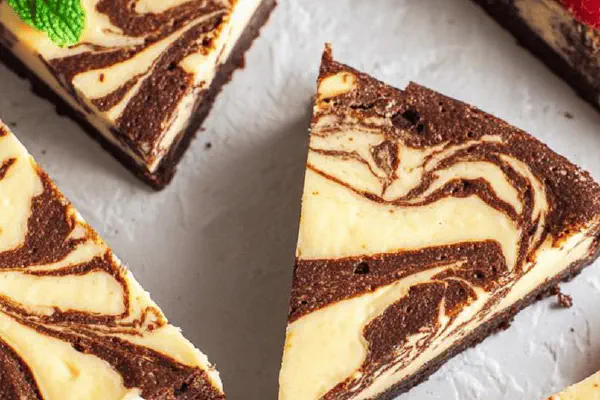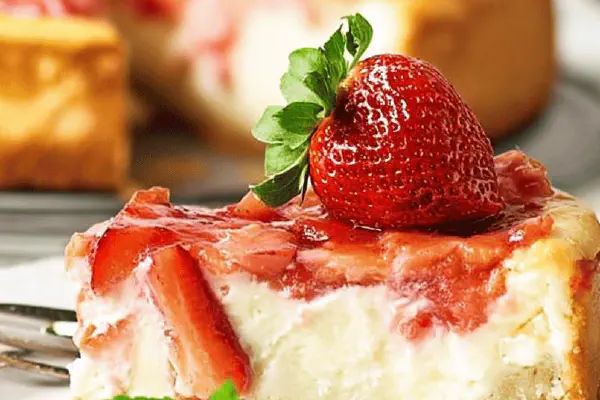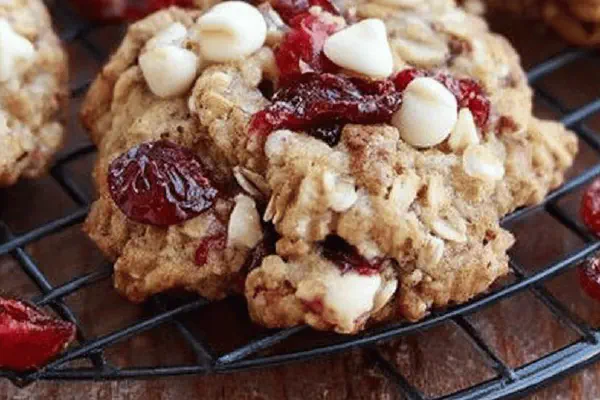Twisted Pecan Cheesecake

By Emma
Certified Culinary Professional
Ingredients
- Crust
- 1⅓ cups graham cracker crumbs
- ⅓ cup packed brown sugar
- 6 tablespoons melted unsalted butter
- Pecan Filling
- ⅓ cup unsalted butter
- ¾ cup granulated sugar
- ½ cup light corn syrup
- 2 large eggs, room temperature
- 1 teaspoon vanilla extract
- 1¼ cups chopped pecans
- Cheesecake
- 24 ounces cream cheese, softened
- 2⁄3 cup granulated sugar
- ¼ teaspoon salt
- 3 tablespoons all-purpose flour
- 1 teaspoon vanilla extract
- 3 large eggs
- 1 cup sour cream
- Pecan Topping
- 2 tablespoons unsalted butter
- ⅓ cup packed light brown sugar
- 1 teaspoon vanilla extract
- 2 tablespoons heavy cream
- ¾ cup chopped pecans
About the ingredients
Method
Crust
- Oven at 325 F, preheat. Spray and line 9-inch springform with parchment—keeps crust from sticking, trust me.
- Mix crumbs, brown sugar, melted butter. Same ratio but I swapped a bit more butter to get a tackier crumb. Press crust mixture halfway up pan sides. Use bottom of flat cup to pack it down hard; uneven crust kills the vibe.
- Freeze crust while you prep next stages. Chill it tight so no soggy borderline.
Pecan Filling
- Melt ⅓ cup butter over medium heat in 2-quart saucepan. Watch closely; butter burns fast once foam fades.
- Toss sugar, corn syrup, pecans in melted butter first. Eggs and vanilla added slowly over top. Stir aggressively to avoid scrambled egg disaster—simmering eggs alone? No thanks.
- Cook 9 to 11 minutes, stirring constantly. Look for thick, bubbling golden brown syrup that coats the spoon like sticky caramel, but resist the urge to rush. This is your flavor base; burnt edges mean bitter, too soft means runny pie.
- Cool pecan syrup about 30 minutes until it thickens—sticky yet pourable. Pour into frozen crust, spread evenly—you want neat edges but no sloppy overlap.
Cheesecake
- Beat cream cheese and sugar till airy, no lumps—that quick fluff sets your creamy foundation. If cold cream cheese, takes ages, so soften an hour under a tea towel.
- Add salt and flour—helps stabilize batter; skip flour and cheesecake cracks are your new reality.
- By hand, fold in vanilla and eggs one at a time, gently. Beat too much and you get cracks or air bubbles that pop during baking.
- Stir in sour cream last—don’t overmix, aim for smooth but still with some body.
- Pour cheesecake mixture over pecan filling evenly; swirls or uneven lumps? Nope. Smooth is key, the texture here rivals fine dessert bars.
- Wrap springform base in 2 layers of foil to prevent water leaks in water bath.
- Place wrapped pan in larger baking pan. Pour warm water an inch up sides of springform. Creates humidity barrier; no cracking or dried edges.
- Bake 55 to 65 minutes—cheesecake center should jiggle slightly when you gently shake pan. Too much jiggle means underdone; too firm means overbaked.
- Turn oven off, leave cheesecake inside 30 minutes with door closed—residual heat finishes it right.
- Afterward, crack door open slowly and cool another 30 minutes. Sudden temp drops trigger cracks and shrinkage; slow wins the day.
- Chill cheesecake overnight wrapped tightly to meld flavors and firm up.
Pecan Topping
- Butter and brown sugar melt together over medium heat. Simmer 2-4 minutes; color will deepen, smell caramel-y and rich. Watch carefully—too dark, it tastes burnt.
- Take off heat, whisk in vanilla and heavy cream till glossy smooth.
- Fold pecans in last for crunch, spoon hot topping slow and steady over chilled cheesecake so it sets with glossy sheen.
- Serve chilled or slightly warmed. Leftovers? Wrap airtight to keep topping crisp, store fridge 4 days max.
Notes
- Substitute graham crumbs with crushed digestive biscuits for a subtly different flavor and a bit crunchier crust.
- Light corn syrup can be replaced with maple syrup for deeper flavor but expect a thinner filling; cook process might extend, watch thickening cues.
- If eggs aren’t room-temp, add them one at a time with a splash of warm water to avoid curdling.
- No sour cream? Plain Greek yogurt works but sharper tang.
- Tough cracking? Next bake try water bath longer soak or add extra room moisture by misting oven before baking.
- Use metal springform for better heat conduction. Always test foil wrap integrity with lukewarm water before baking to avoid leaks and waterlogged crust.
Cooking tips
Chef's notes
- 💡 Press the crust thick on pan sides- crumbly edges wreck structure. Use bottom of flat cup. Freeze crust solid before pouring filling. No chills? Runny edges sneak in. Butter ratio matters here- slightly more butter firms crumb without grease.
- 💡 Watch pecan filling closely- foam fading means watch burn point. Stir constantly but eggs must go slow over sugar nuts mix or scrambled mess runs rampant. Thick golden syrup coats spoon, not watery, not dark brown burnt. Timing 9-11 min varies with pan and heat source.
- 💡 Cheesecake batter needs softened cream cheese—cold lumps never fix well. Flour stabilizes or cracks haunt bake. Beat sugar and cheese airy but fold vanilla and eggs gently to avoid air bubbles that pop and crater top. Stir sour cream last, aim for body, not slurry.
- 💡 Wrap springform bottom twice in foil, test with lukewarm water before baking- leaks ruin crust with water bath. Oven temp steady at 325F. Water bath creates humidity to stop cracking and dry edges. After bake, don’t yank cake out—oven door closed 30 mins residual heat finishes bake.
- 💡 Topping cooks fast: butter and sugar darken to nearly caramel color then cooled slightly before cream and vanilla whisked in. Fold nuts last, spoon hot topping over chilled cheesecake slow. Glossy sheen sets off texture and stops run off. Store airtight, topping stays crisp 4 days max.
Common questions
Why does crust come out soggy sometimes?
Usually butter too little or crust not firmly pressed. Press firmly up pan sides, freeze crust solid before pouring filling. Water bath leaks can soak bottom too- check foil wraps tight.
Can maple syrup replace corn syrup?
Yes, but maple thins filling viscosity. Longer cook to thicken pecan syrup needed. Flavor deeper, texture looser. Watch thickening cues, bubbles, spoon coat before pouring. Adjust timing not exact.
What if eggs aren’t room temp?
Add eggs one at a time plus splash warm water to warm mixture slowly- avoids curdling. Cold eggs cause scrambled textures. Slow incorporation is key to smooth filling.
How best to store leftovers?
Wrap airtight, fridge holds 4 days for topping crispness. Warm gently if topping too firm. Freeze cheesecake without topping for longer; topping texture worsens on thaw.



